Profintern class cruisers
 Soviet Navy
Soviet Navy
Chervona Ukrainia, Profintern, Krazny Krim
The “admirals class” planned in 1913. The ships studied there are from two very similar classes: The Admiral Nakhimov and Svetlana classes of the Tsarist Navy, ordered in 1913, launched in 1916, but never completed due to the onset of the civil war. Another launched later became the Krasny Kavkaz, after a total reconstruction. These ships were more deserving of the description of rusty sheet piles in their basin when in 1921 it was decided to save them for completion again, after the civil war.
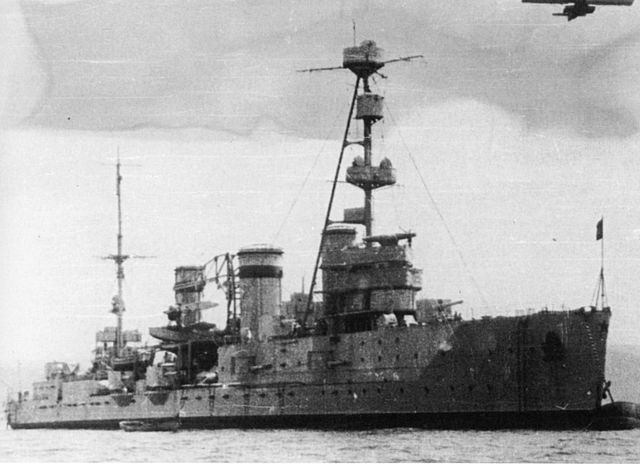
Genesis of the Svetlana class
In 1910, the Russian Duma approved construction of modern dreadnought, whereas there were no modern cruisers or destroyers to follow them. It was only after the first Gangut-class battleship was ordered, that the Russian admiralty proposed a cruiser design to the Duma, which was approved as part of the 1912–1916 shipbuilding program. These four brand-new light cruisers were to scout for the battleships but also act as flotilla leaders teaming up with the new Novik class destroyers.
First design sketch of the future Svetlana class went back to 1907, however, numerous revisions occurred amidst specification changes over the years. by early 1912 the Admiralty decided to plan a design contest for a 4,100–5,100 metric-ton cruiser armed withat least twelve 130mm Pattern 1913 guns. They had to be capable of 30 knots (56 km/h; 35 mph), with light side armor.
They also had to resemble to the dreadnoughts under construction and lay mines. As submissions from shipyards failed to meet requirements, the admiralty passed new requirements for an heavier ship, of about 1500 tons. Eventually, both Russo-Baltic and Putilov Shipyards 6,700 ton designs were accepted and combined in November 1912.
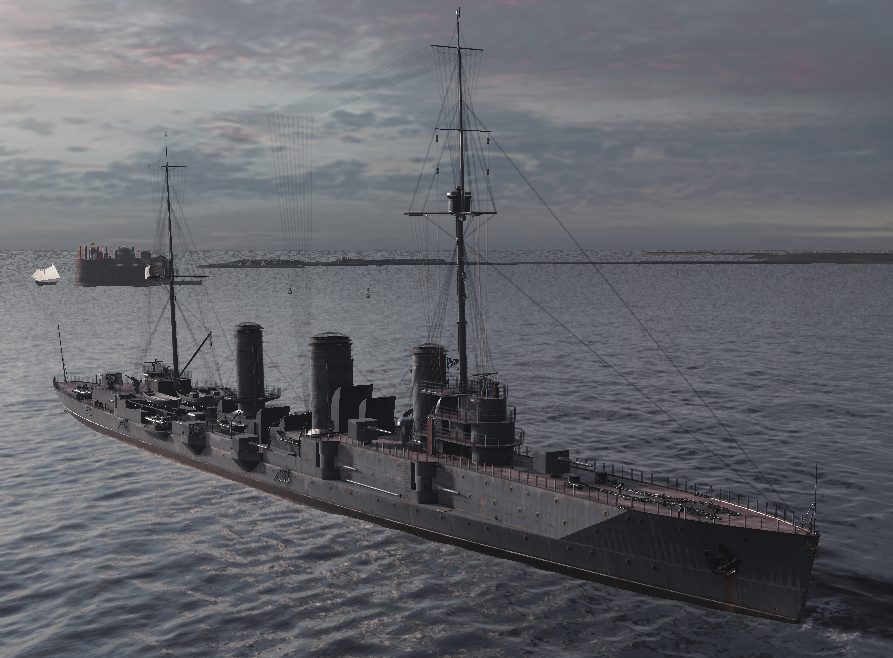
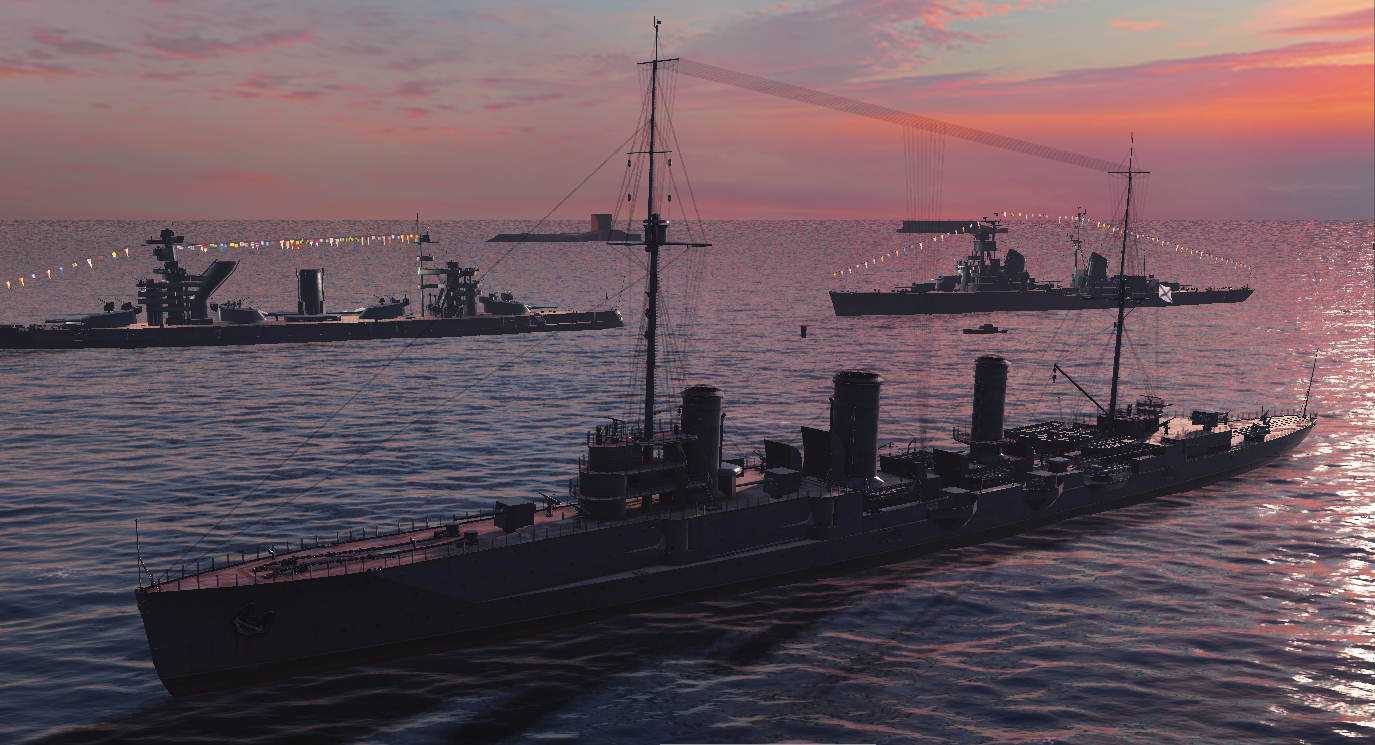
Wow’s rendition of the Svetlana before reconstruction
By February 1913, however, development of the new Svetlana class was hampered by funds reallocated to the new Borodino-class battlecruisers which were eventually never completed, shipyards had to agree to reduce their bill to 8,300,000 rubles while the ships could be speed downgraded to 29.5 knots. Two ships from each yard were ordered on 13 February. During construction, Frahm anti-roll tanks were added as well as installations to use a future seaplane.
The Profintern (ex Svetlana, of the Svetlana class) was the first to be completed on the original plan in 1925. She spent another three years of testing before being admitted in service with the new Soviet Navy. Her sister-ship, the Chervonia Ukraina (ex. Admiral Nakhimov, of the Nakhimov class), was completed in 1922, but again, her trials went on until 1927 and she was pressed into service afterward. By 1930 they had a completely outdated design, with pre-war machinery delivering only 22 knots instead of 29 predicted, and their underpowered artillery (130 mm) placed on the decks, forecastle and barbettes in single shielded mounts were noted as imprecise in heavy weather.
The first serie (Svetlana) was to consist of four ships. Only the first was completed.
- Svetlana (LD 07/12/1913) > Profintern 1922 Comp 1926 Renamed Krasny Krim 1939 BU 1960
- Admiral Butakov (LD 29/11/1913) launched 8/1916 BU incomplete 1956
- Admiral Spiridov (LD 29/11/1913) launched 9/1916 Hulked 1947
- Admiral Greig (LD 07/11/1913) launched 12/1916 stranded 12/1938
The second serie also comprised four ships: Two completed (*one on a very different design)
- Admiral Nakhimov (LD 31/10/1913) > Chervonia Ukraina 1926 Foundered 11/1941
- Admiral Lazarev* (LS 31/10/1913) > Krazny Kavkaz 1932 sunk 1950s
- Admiral Kornilov (LD 7.14) BU incomplete 1922
- Admiral Istomin (LD 7.14) BU incomplete 1938
It should be noted also that alongside these new cruisers, Russia ordered two modern cruisers in Germany: The little-known Murarev Amurski class. Both were laid down at Schichau, Dantzig in 9.13, launched in April and November 1914 and not surprisingly, requisitioned in August 1914. They were completed in December 1914 and September 1915 as SMS Stettin and Pillau respectively.
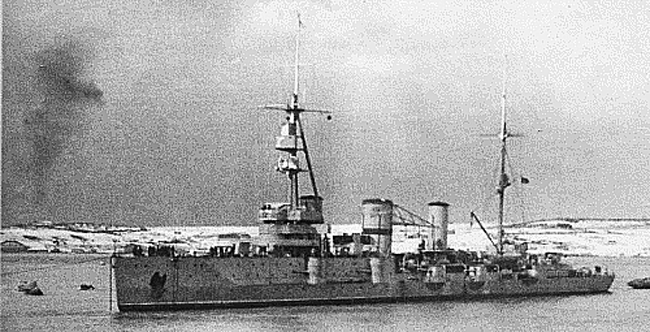
Krazny Krim (Profintern, ex-Svetlana) during ww2, Ukraine winter 1941
Design of the Svetlana/Nakhimov class
Propulsion
These cruisers were approximatively the same length of the battleships, but their profile was quite different. They measured 158.4 meters long, 15.3 meters wide for a 5.56 meters draught and finally displaced 6,860 metric tons (6,750 long tons) standard. Propulsion consisted in four geared Curtis-AEG-Vulkan steam turbines connected each to a propeller shaft, and fed by 13 Yarrow boilers. In total this powerplant was rated for 50,000 designed shaft horsepower (37,000 kW), enough to give them the required 29.5 knots. Their range was about 3,350 nmi (6,200 km; 3,860 mi) at 14 knots (26 km/h; 16 mph) thanks to 1,167 long tons of fuel oil (Kransy Krim figures).
Armament
While the planned armament of twelve 1913 pattern 130 mm guns was kept, the increase in size allowed the engineers to add three more guns, all in shielded single mounts. Six were located on the main deck in casemates. They were the more problematic in bad weather. The other were located on the decks, forecastle and aft, and on the superstructures and broadsides. These guns could hit a target at 15,364 meters (16,802 yd) when elevated at +20°. They fired a 36.86kg (81.3 lb) shell at 823 m/s (2,700 ft/s) and with a trained crew of gunners, eight rounds per minute.
The secondary armament of the Svetlana class ships was reduced to four 38-caliber 63.3 mm (2.5 in) AA guns with a +75° elevation. The hull’s broadsides also comprised two 450 mm (17.7 in) torpedo tubes. Also as specified, rails and fittings allowed to carry and operate 100 mines. Before the end of their construction, the original AA guns were replaced by 76.2mm/30 (3.00 in) Lender AA guns. 102mm (4.0 in) AA guns were also planned for the rest of the serie.
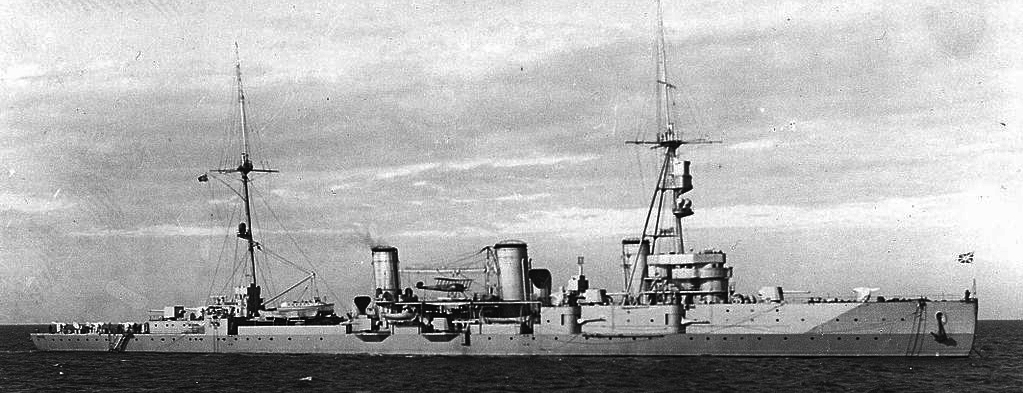 Chervonia Ukraina in the 1930s
Chervonia Ukraina in the 1930s
Protection
Due to their high speed, the Svetlana class cruisers were intended as light, agile cruisers, so protection was an afterthought. However as specified early on, they received a waterline belt of 76 mm, extending all along the hull and and up to 0.91 meters (3 ft) below the waterline. The upper part awas protected by a 25-millimeter (0.98 in) strake of armor between the lower and main decks. Both decks were 20 mm (0.79 in) thick. The funnel base was protected by 25 mm. The conning tower was 76 mm thick and the gun shields only 25 mm, only sufficient for shrapnells.
 Krazny Krim during ww2
Krazny Krim during ww2
Modernization of 1939 and 1941
The Profintern was sent to the Black Sea in 1929. She will be modernized in 1939, receiving new modern rangefinders, had her catapult, cranes and planes removed to improve stability while gaining a more effective AA than the original four 65 mm guns, with six new long-range, fast-firing 75 mm AA guns, just like her sister-ship. She was to be renamed Krasny Krim and re-enter active service in November, only to return a few times later for another modernization of the AAA that ended in 1941. For her part, Chervona Ukraina receive a modernisaton of the same type between 1939 and 1941.
The Profintern class in action
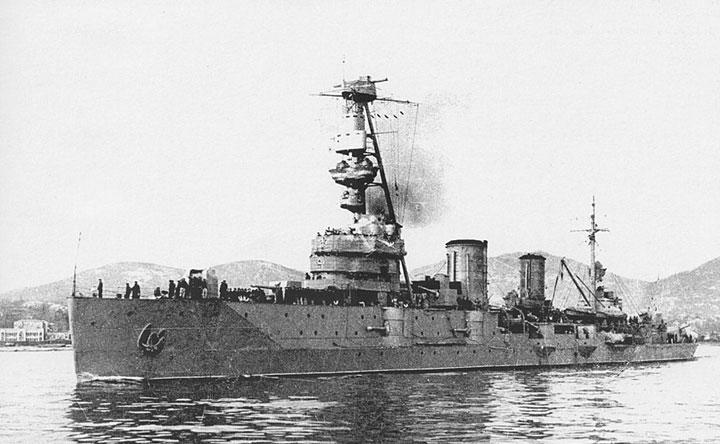
Chervonia Ukraina was also on duty in the Black Sea during the German invasion. She defended Odessa and Sevastopol. During these operations, she was attacked by Stukas of Stgswr 77 on November 12, 1941, and was severely damaged. She would sink the next day despite all the effort of her dedicated crews.
After the fall of the fortress of Sevastopol, Krasny Krim escaped to Poti, and from there led many offensive sorties, receiving two new 76mm AA cannons, and in 1945 one of the first Soviet Navy aerial radar, of American design and manufacture. In March 1945, she became a training ship, withdrawn from the front. She held that role until 1958.

wow’s Profintern 3D rendition profile

Author’s illustration of the Chervonia Ukraina in 1941
Specifications
Displacement: 7560t (metric tons) to 8330t standard, 9030t Fully Loaded (8,890 long tons; 9,950 short tons)
Dimensions: 169,50 x 15.70 x 6.20 m (523 ft 4 in x 51 ft 6 in x 21 ft 8 in)
Propulsion: 4 shafts, 2 Brown-Boveri geared turbines, 12 Yarrow oil-fired boilers, 55 000 hp (41,000 kW)
Speed & Range: 29 knots (33 mph; 54 km/h), Range: 3,500 nmi (6,480 km) @15 knots (28 km/h)
Armour: 20mm (decks) to 76 mm (turrets, conning tower)
Crew: 850
Armament: 10 x 130mm (5.5 in), 6 x 75mm (3 in), 16 x 45mm AA (in), 4 x 12,7mm AA (0.5 in), 12 x 533 mm TTs (4×3), 100 mines, 3 seaplanes (before 1939).
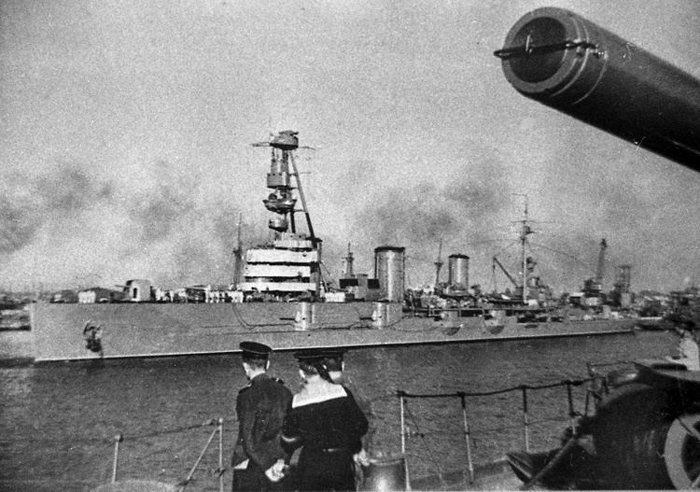 Krazny Krim in the black sea during ww2
Krazny Krim in the black sea during ww2
Sources/read More
//en.wikipedia.org/wiki/Admiral_Nakhimov-class_cruiser
//weaponsandwarfare.com/2015/05/25/svetlana-class-cruiser
//www.navypedia.org/ships/russia/ru_cr_svetlana.htm
Meister, Jürg (1979). Soviet Warships of the Second World War.
J.Gardiner’s Conway’s All the World’s Fighting Ships: 1906-1922.
Annapolis, Maryland: Naval Institute Press

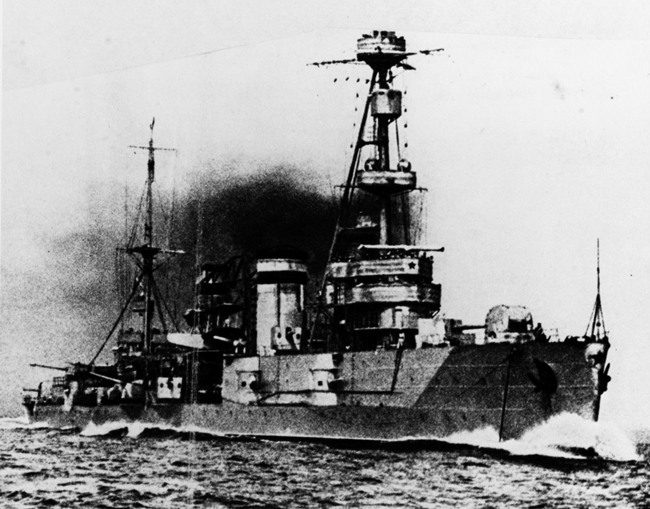
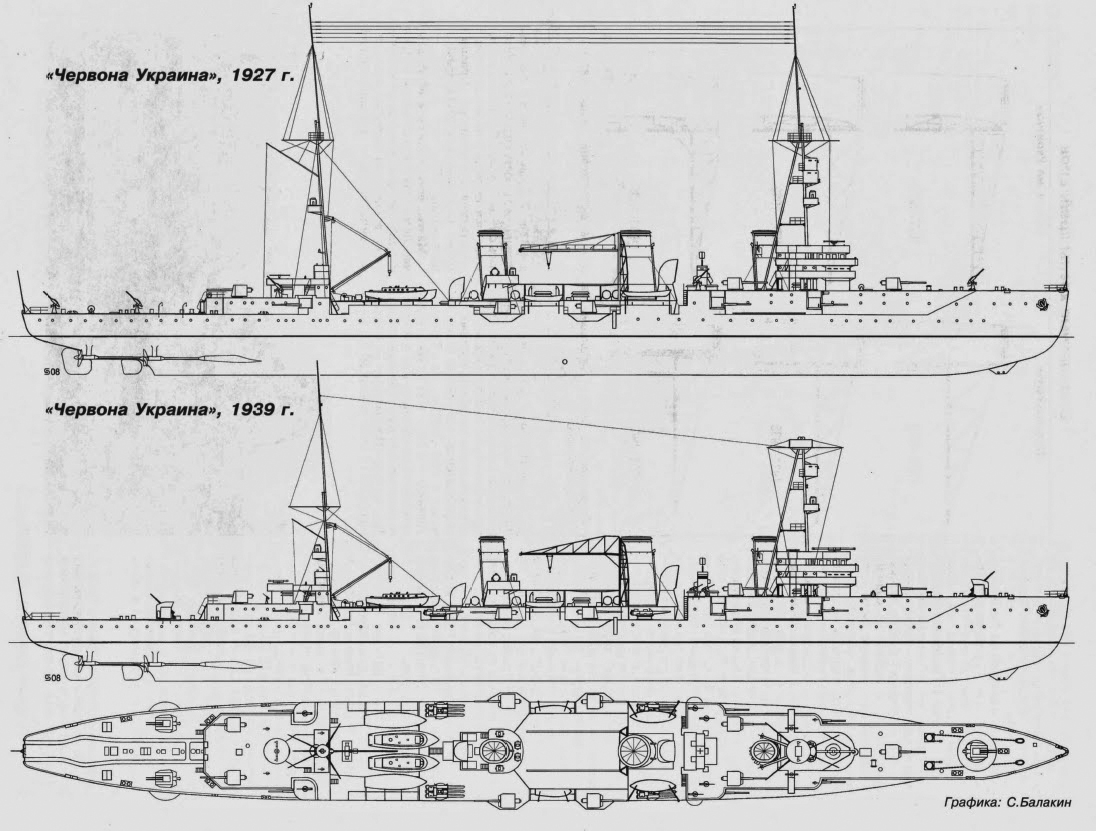

 Latest Facebook Entry -
Latest Facebook Entry -  X(Tweeter) Naval Encyclopedia's deck archive
X(Tweeter) Naval Encyclopedia's deck archive Instagram (@navalencyc)
Instagram (@navalencyc)





 French Navy
French Navy Royal Navy
Royal Navy Russian Navy
Russian Navy Armada Espanola
Armada Espanola Austrian Navy
Austrian Navy K.u.K. Kriegsmarine
K.u.K. Kriegsmarine Dansk Marine
Dansk Marine Nautiko Hellenon
Nautiko Hellenon Koninklije Marine 1870
Koninklije Marine 1870 Marinha do Brasil
Marinha do Brasil Osmanlı Donanması
Osmanlı Donanması Marina Do Peru
Marina Do Peru Marinha do Portugal
Marinha do Portugal Regia Marina 1870
Regia Marina 1870 Nihhon Kaigun 1870
Nihhon Kaigun 1870 Preußische Marine 1870
Preußische Marine 1870 Russkiy Flot 1870
Russkiy Flot 1870 Svenska marinen
Svenska marinen Søværnet
Søværnet Union Navy
Union Navy Confederate Navy
Confederate Navy Armada de Argentina
Armada de Argentina Imperial Chinese Navy
Imperial Chinese Navy Marinha do Portugal
Marinha do Portugal Mexico
Mexico Kaiserliche Marine
Kaiserliche Marine 1898 US Navy
1898 US Navy Sovietskiy Flot
Sovietskiy Flot Royal Canadian Navy
Royal Canadian Navy Royal Australian Navy
Royal Australian Navy RNZN Fleet
RNZN Fleet Chinese Navy 1937
Chinese Navy 1937 Kriegsmarine
Kriegsmarine Chilean Navy
Chilean Navy Danish Navy
Danish Navy Finnish Navy
Finnish Navy Hellenic Navy
Hellenic Navy Polish Navy
Polish Navy Romanian Navy
Romanian Navy Turkish Navy
Turkish Navy Royal Yugoslav Navy
Royal Yugoslav Navy Royal Thai Navy
Royal Thai Navy Minor Navies
Minor Navies Albania
Albania Austria
Austria Belgium
Belgium Columbia
Columbia Costa Rica
Costa Rica Cuba
Cuba Czechoslovakia
Czechoslovakia Dominican Republic
Dominican Republic Haiti
Haiti Hungary
Hungary Honduras
Honduras Estonia
Estonia Iceland
Iceland Eire
Eire Equador
Equador Iran
Iran Iraq
Iraq Latvia
Latvia Liberia
Liberia Lithuania
Lithuania Mandchukuo
Mandchukuo Morocco
Morocco Nicaragua
Nicaragua Persia
Persia San Salvador
San Salvador Sarawak
Sarawak Uruguay
Uruguay Venezuela
Venezuela Zanzibar
Zanzibar Warsaw Pact Navies
Warsaw Pact Navies Bulgaria
Bulgaria Hungary
Hungary

 Bundesmarine
Bundesmarine Dutch Navy
Dutch Navy Hellenic Navy
Hellenic Navy Marina Militare
Marina Militare Yugoslav Navy
Yugoslav Navy Chinese Navy
Chinese Navy Indian Navy
Indian Navy Indonesian Navy
Indonesian Navy JMSDF
JMSDF North Korean Navy
North Korean Navy Pakistani Navy
Pakistani Navy Philippines Navy
Philippines Navy ROKN
ROKN Rep. of Singapore Navy
Rep. of Singapore Navy Taiwanese Navy
Taiwanese Navy IDF Navy
IDF Navy Saudi Navy
Saudi Navy Royal New Zealand Navy
Royal New Zealand Navy Egyptian Navy
Egyptian Navy South African Navy
South African Navy






























 Ukrainian Navy
Ukrainian Navy dbodesign
dbodesign
Proofread your documents before you publish them! I have seen many punctuation and spelling errors.